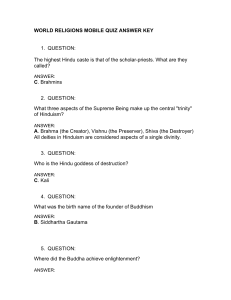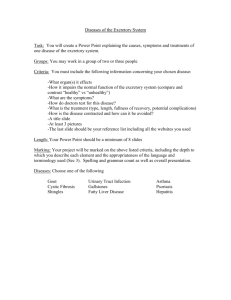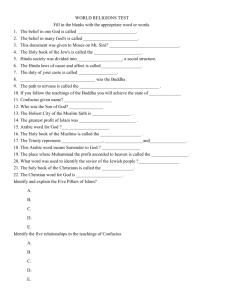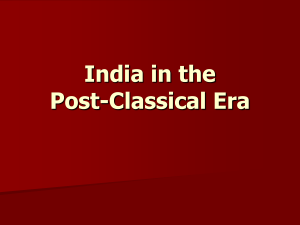World Religions
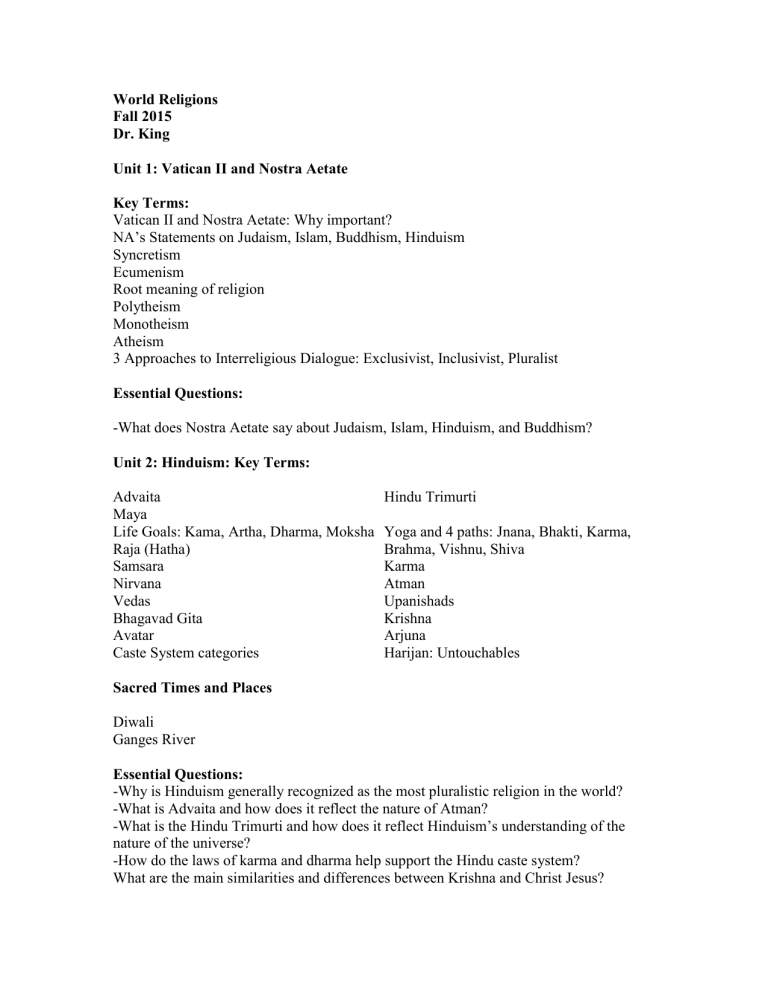
World Religions
Fall 2015
Dr. King
Unit 1: Vatican II and Nostra Aetate
Key Terms:
Vatican II and Nostra Aetate: Why important?
NA’s Statements on Judaism, Islam, Buddhism, Hinduism
Syncretism
Ecumenism
Root meaning of religion
Polytheism
Monotheism
Atheism
3 Approaches to Interreligious Dialogue: Exclusivist, Inclusivist, Pluralist
Essential Questions:
-What does Nostra Aetate say about Judaism, Islam, Hinduism, and Buddhism?
Unit 2: Hinduism: Key Terms:
Advaita
Maya
Hindu Trimurti
Life Goals: Kama, Artha, Dharma, Moksha Yoga and 4 paths: Jnana, Bhakti, Karma,
Raja (Hatha) Brahma, Vishnu, Shiva
Samsara Karma
Nirvana
Vedas
Bhagavad Gita
Atman
Upanishads
Krishna
Avatar
Caste System categories
Sacred Times and Places
Arjuna
Harijan: Untouchables
Diwali
Ganges River
Essential Questions:
-Why is Hinduism generally recognized as the most pluralistic religion in the world?
-What is Advaita and how does it reflect the nature of Atman?
-What is the Hindu Trimurti and how does it reflect Hinduism’s understanding of the nature of the universe?
-How do the laws of karma and dharma help support the Hindu caste system?
What are the main similarities and differences between Krishna and Christ Jesus?
-How are Hinduism’s four life goals of kama, artha, dharma, and moksha like typical lifestages most people go through life?
Unit 3: Buddhism: Key Terms:
Sidhartha Gautama
King Suddhodhana’s Prophesy
Ascetism
Bodhi Tree
Sangha
Dependent Co-Arising
Dhammapada
Budha Nature/Buddha Self
Eightfold Path
Three Practices of 8-fold Path
Bodhissattva
Dali Lama
Buddha
Four Passing Sights
The Middle Way/Path
Anatman
Four Noble Truths
Five Precepts
Nirvana
Arhat
Lama (Tibetan)
Lotus Sutra
Emptiness
Sacred Time and Place
Visakha
Stupas
Bodh Gaya
Kushinara
Temple
Lumbini Gardens
Sarnath
Essential Questions
-How did Siddharth Gautama, the Buddha, understand who or what he was?
-How did the Four Passing Sights lead Siddhartha away from his life as a prince?
-How does asceticism view the spiritual journey towards holiness or enlightenment?
-How was Buddha’s Middle Path different from an ascetical spiritual journey?
-What did Buddha finally realize when he achieved enlightenment?
-What is the “practice of mindfulness”?
-Where is the authority of Buddhism’s Four Noble Truths ultimately located?
-How does the Eightfold Path illustrate the importance Buddhism places on the inner life and its influence on the outer life?
-How is nirvana different from the Hindu idea of moksha?
-How do Catholics and Buddhist differ in their understanding of human suffering?
-What are some basic similarities and differences between Siddhartha Gautama (The
Buddha) and Jesus of Nazareth (The Christ)?
Unit 4: Islam : Key Terms: Need to Know
Abrahamic Faith
Root meanings of:
Islam
Gabri’el
Salam
Allah
Muslim
Qur’an (Koran)
Sura(s)
Shariah
Ka’bah
Sunnis and Shi’is
Imam
Caliph
Hijab
Holy Places: Why are they holy to Muslims?
Mecca
Medina
Mosque
Sunna
Hijrah
Minaret
Jihad
5 Pillars of Islam
Sacred Time:
Ramadan Eid al-Fitr 5 times of daily prayer
Key Questions:
How has Muslim history and geography influenced the development of Islam?
How has Muslim civilization contributed to Western civilization?
Why Muslims tend to read the Qur’an literally?
How do Muslims understand the relationship between Hebrew, Christian, and Muslim scriptures?
Why do Muslims reluctantly use the physical image of God or Mohammad?
Why are increasing numbers of younger Muslims adopting more traditional beliefs and practices (such as women wearing the Hijab) than their parents?
How does the understanding of God’s nature differ between Muslims and Christians?
Essay Questions: You will be given a choice of 4 essays and will have to answer 2, no more no less.
1)
Describe how the 5 Pillars reflect Islam’s emphasis on unity and solidarity with the poor.
2) Describe how the doctrines of dharma and karma help support and justify the
Hindu caste system. Include in your answer the characteristics of each of the castes
3) How do the members of the Hindu Trimurti interact to maintain the universe and creation? Include in your answer the Hindu understanding of the universe, time, and karma
4) How do Buddhist and Catholics differ in their understanding and response to human suffering
